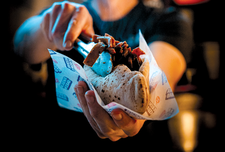Understanding the GRUB 2 bootloader
Serving Up GRUB

© Photo by Bas Peperzak on Unsplash
Deeper knowledge of the GRUB 2 bootloader will help you with troubleshooting and customizing your Linux boot environment.
Initially released in 1995, the GRUB bootloader has been around for 30 years. A major rewrite began around 2002 resulting in GRUB 2. Even today, the overwhelming majority of Linux computers continue to rely on GRUB.
Despite GRUB's advanced age, most Linux users are only vaguely aware of GRUB's existence. GRUB typically operates silently in the background – the average user doesn't notice it during operating system installation or the boot process. If a user does see GRUB, this typically means something has gone seriously wrong. Because attempting to understand GRUB in that moment creates significant stress, you should have at least a basic understanding of GRUB's architecture and configuration so that you know your recovery options should a crisis arise.
The GRUB bootloader is actually called GRUB 2 to distinguish it from the first version. I will use the name GRUB 2 even though the old version isn't really around anymore.
[...]
Buy this article as PDF
(incl. VAT)
Buy Linux Magazine
Subscribe to our Linux Newsletters
Find Linux and Open Source Jobs
Subscribe to our ADMIN Newsletters
Support Our Work
Linux Magazine content is made possible with support from readers like you. Please consider contributing when you’ve found an article to be beneficial.

News
-
Zorin OS 18 Hits over a Million Downloads
If you doubt Linux isn't gaining popularity, you only have to look at Zorin OS's download numbers.
-
TUXEDO Computers Scraps Snapdragon X1E-Based Laptop
Due to issues with a Snapdragon CPU, TUXEDO Computers has cancelled its plans to release a laptop based on this elite hardware.
-
Debian Unleashes Debian Libre Live
Debian Libre Live keeps your machine free of proprietary software.
-
Valve Announces Pending Release of Steam Machine
Shout it to the heavens: Steam Machine, powered by Linux, is set to arrive in 2026.
-
Happy Birthday, ADMIN Magazine!
ADMIN is celebrating its 15th anniversary with issue #90.
-
Another Linux Malware Discovered
Russian hackers use Hyper-V to hide malware within Linux virtual machines.
-
TUXEDO Computers Announces a New InfinityBook
TUXEDO Computers is at it again with a new InfinityBook that will meet your professional and gaming needs.
-
SUSE Dives into the Agentic AI Pool
SUSE becomes the first open source company to adopt agentic AI with SUSE Enterprise Linux 16.
-
Linux Now Runs Most Windows Games
The latest data shows that nearly 90 percent of Windows games can be played on Linux.
-
Fedora 43 Has Finally Landed
The Fedora Linux developers have announced their latest release, Fedora 43.

